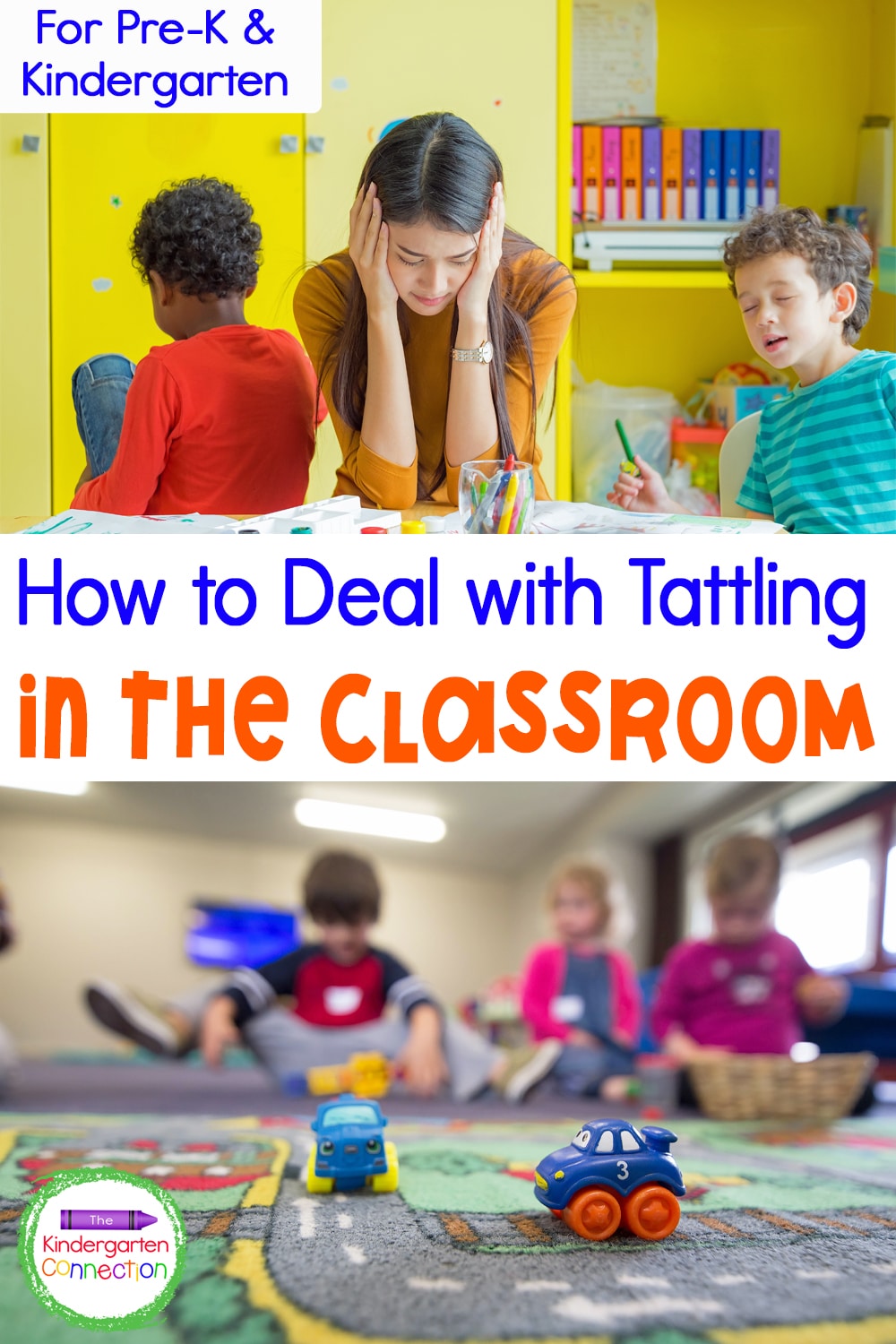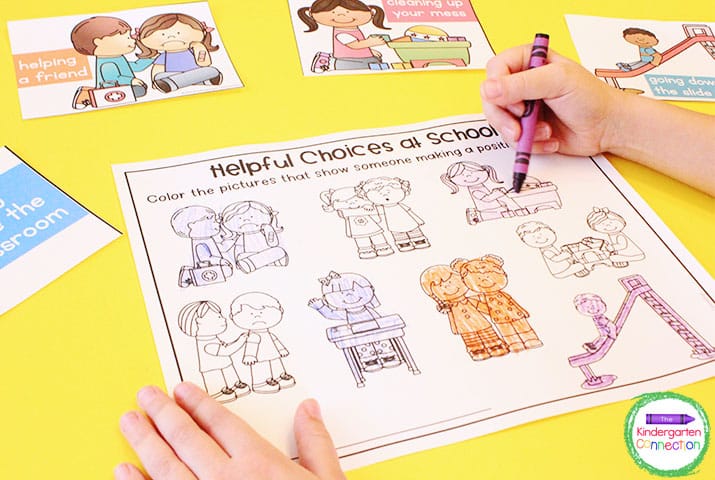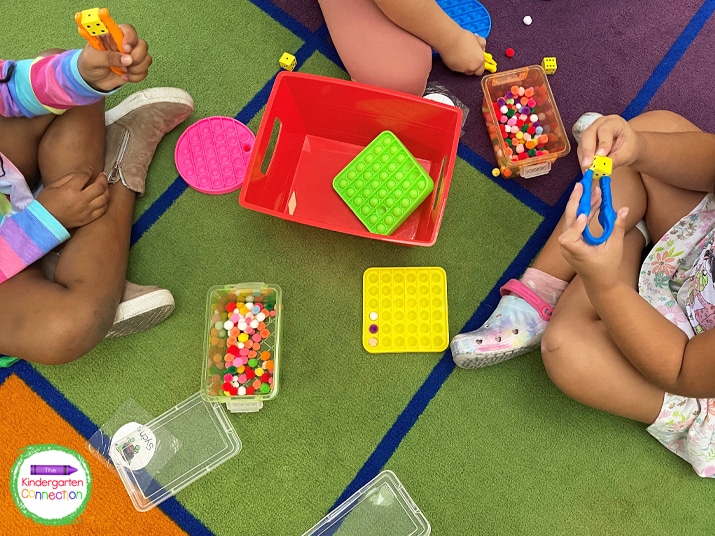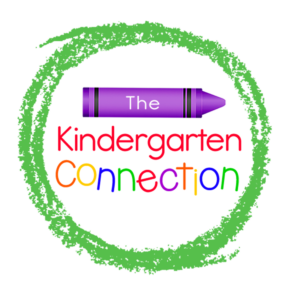When you were thinking about becoming an early childhood teacher, what did you imagine? Trendy outfits, students loving you, teaching academics, and all your students getting “it” the first time learning something? Now let’s think about the reality: students needing to be taught how to do the basics like talking to each other, how to play, how to line up, and all kinds of social skills. That includes how to handle it when another student is doing something wrong (AKA tattling!). Today I want to share with you some effective strategies for dealing with tattling in the classroom!
*For more tips on how to create a positive AND playful learning environment in your classroom, be sure to join us in P.L.A.Y. (Playful Learning All Year)!

I bet I can name one of the top things that your students come running to you for… another student doing something wrong. Yes, you guessed it, let’s talk about tattling!
One of the most requested questions I have received is, “How can I get my students to stop tattling?”
I will be honest and tell you there are a lot of ways to help our students with tattling. One way is with lots of problem solving mini-lessons and role-playing.

We need to remember that often kids still want to inform even if they have already solved the problem, so I like to change up my language. When a student comes to me saying, “They cut in front of me!” I model and ask, “Did you tell them this is your spot?”
If the answer is “No,” the student still needs support with this and may need help with the language to use.
If the student answered “Yes,” then I ask them “Did they stop?” If they did stop, then I make a big deal about how they solved the problem alone. I may say, “It sounds like you problem solved that all on your own! That’s awesome!” And then I move on.
I do not talk to the other student. They stopped. The problem is solved.

Sometimes we are tempted to say things like, “Go problem solve,” or “Use your words.” But if we aren’t explicitly modeling the situation, they won’t really know what to do or what that means.
Remember how I said we have to teach the basics? This is exactly what I mean.
We assume the students know or their families have taught them, but that is a dangerous assumption. I like to go in reminding myself that these kids haven’t been exposed to my classroom expectations so I need to start with the basics so we can get to the school stuff. Go slow to go fast!
It can be tempting to solve problems for our students so we can keep moving through the day and keep the peace. But, when dealing with tattling in the classroom, the biggest key is to not solve for them.
As teachers, it is important for us to walk them through it so that they can build on past examples when a situation happens again. This takes time, but I remind myself that THIS is the work of early childhood, even when it feels like the other expectations are piling on and distracting. When this is smoother, other things (academics for example) will become smoother.
It’s worth the time even when it feels super hard!

We may even have time to remember what we thought teaching would be like and embrace what teaching in early childhood actually is; an investment into helping our students learn the important social skills to become great individuals!
(even if you “aren’t allowed to play”)
If you’re wanting to incorporate playful learning, free-flowing centers, effective routines, and more in your Pre-K or Kindergarten classroom, then you’ll definitely want to join us in P.L.A.Y. (Playful Learning All Year)!
This course is a deep dive into practical ways that you can create a playful learning environment in your classroom. Be sure to request an invitation so you’re the first to hear when the virtual doors open!

2 Responses
I like how the teacher says, “ did you tell her this is your spot,” but what if the other student denies that she cut in the line? Then I don’t know what to do. It’s one person’s word against another’s. What do I do?
Hi Janice!
Line issues and cutting in line can definitely be so challenging! If a student is denying they cut in line and there are no other witnesses and it starts to become a debate, I typically choose to move on quickly. So that can look like saying, “Ok, I am not sure exactly what happened, but next time, we are going to both practice using our words if we need something so that we can problem solve it. For now, I am going to have ___ (pick another student) take this spot in line to help us out, because we can’t be late!” Then I just move on right away and don’t engage further. Another child takes the spot and I don’t discuss it anymore. This is a more positive solution than debating back and forth for too long or sending both students to the back of the line, which feels like a punishment and isn’t fair if we don’t have the whole story. I hope this helps!